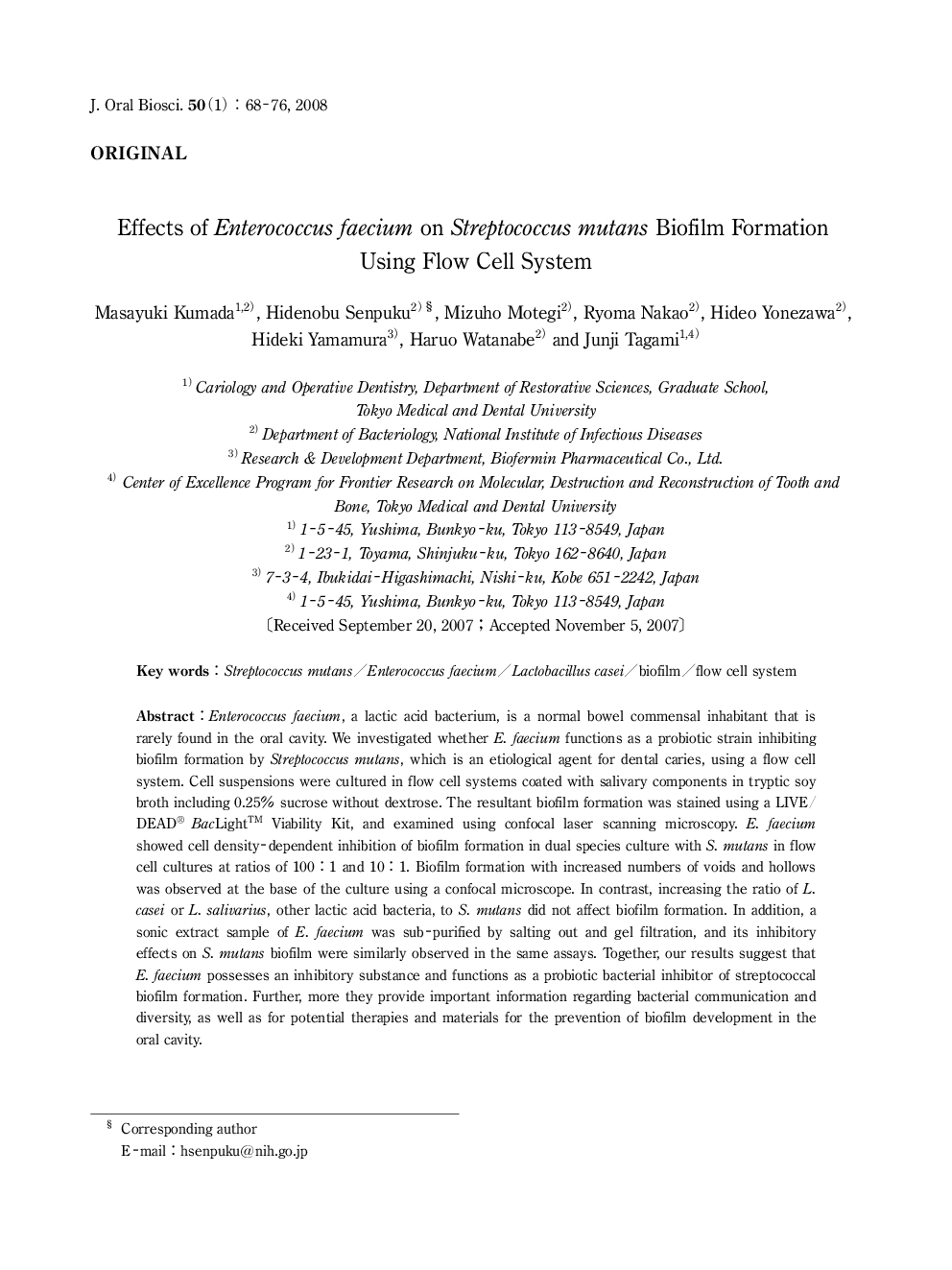| Article ID | Journal | Published Year | Pages | File Type |
|---|---|---|---|---|
| 2777071 | Journal of Oral Biosciences | 2008 | 9 Pages |
Enterococcus faecium, a lactic acid bacterium, is a normal bowel commensal inhabitant that is rarely found in the oral cavity. We investigated whether E. faecium functions as a probiotic strain inhibiting biofilm formation by Streptococcus mutans, which is an etiological agent for dental caries, using a flow cell system. Cell suspensions were cultured in flow cell systems coated with salivary components in tryptic soy broth including 0.25% sucrose without dextrose. The resultant biofilm formation was stained using a LIVE/DEAD®BacLightTM Viability Kit, and examined using confocal laser scanning microscopy. E. faecium showed cell density-dependent inhibition of biofilm formation in dual species culture with S. mutans in flow cell cultures at ratios of 100: 1 and 10: 1. Biofilm formation with increased numbers of voids and hollows was observed at the base of the culture using a confocal microscope. In contrast, increasing the ratio of L. casei or L. salivarius, other lactic acid bacteria, to S. mutans did not affect biofilm formation. In addition, a sonic extract sample of E. faecium was sub-purified by salting out and gel filtration, and its inhibitory effects on S. mutans biofilm were similarly observed in the same assays. Together, our results suggest that E. faecium possesses an inhibitory substance and functions as a probiotic bacterial inhibitor of streptococcal biofilm formation. Further, more they provide important information regarding bacterial communication and diversity, as well as for potential therapies and materials for the prevention of biofilm development in the oral cavity.
